Words Matter 2019 is a collaborative installation comprised of several component projects that each foregrounds a specific word or set of words in order to explore the many ways that words themselves matter in our social worlds. Words Matter 2019 was exhibited at the HASTAC (Humanities, Arts, Science, and Technology Alliance and Collaboratory) conference hosted by the University of British Columbia in Vancouver, Canada in May 2019.

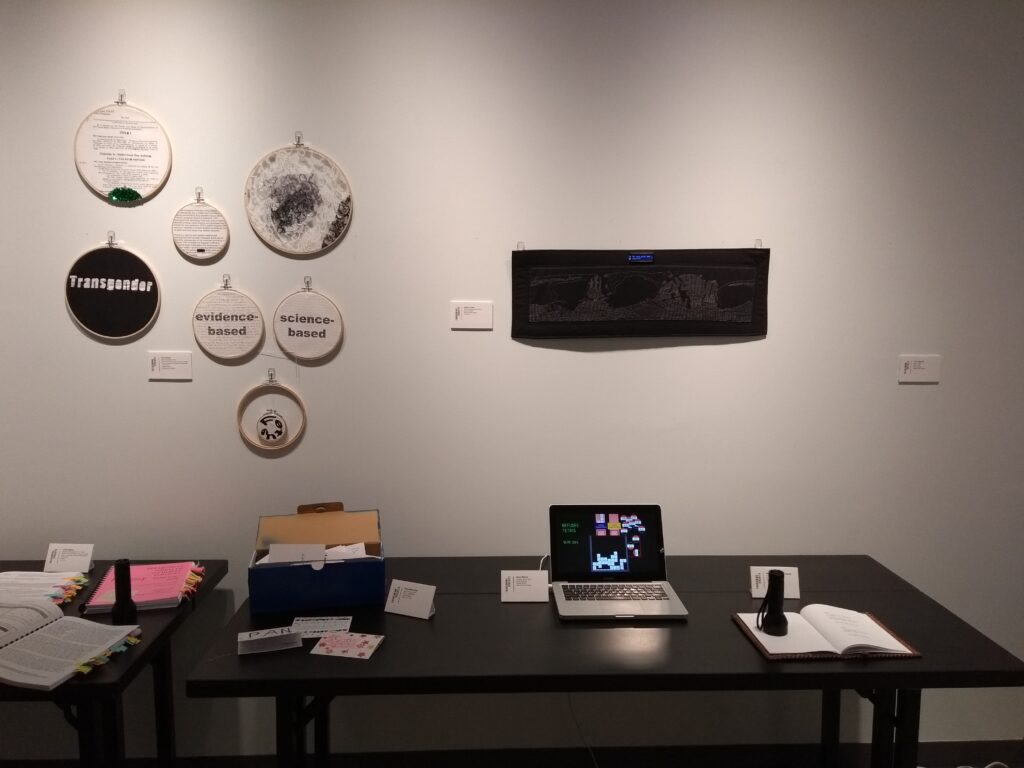
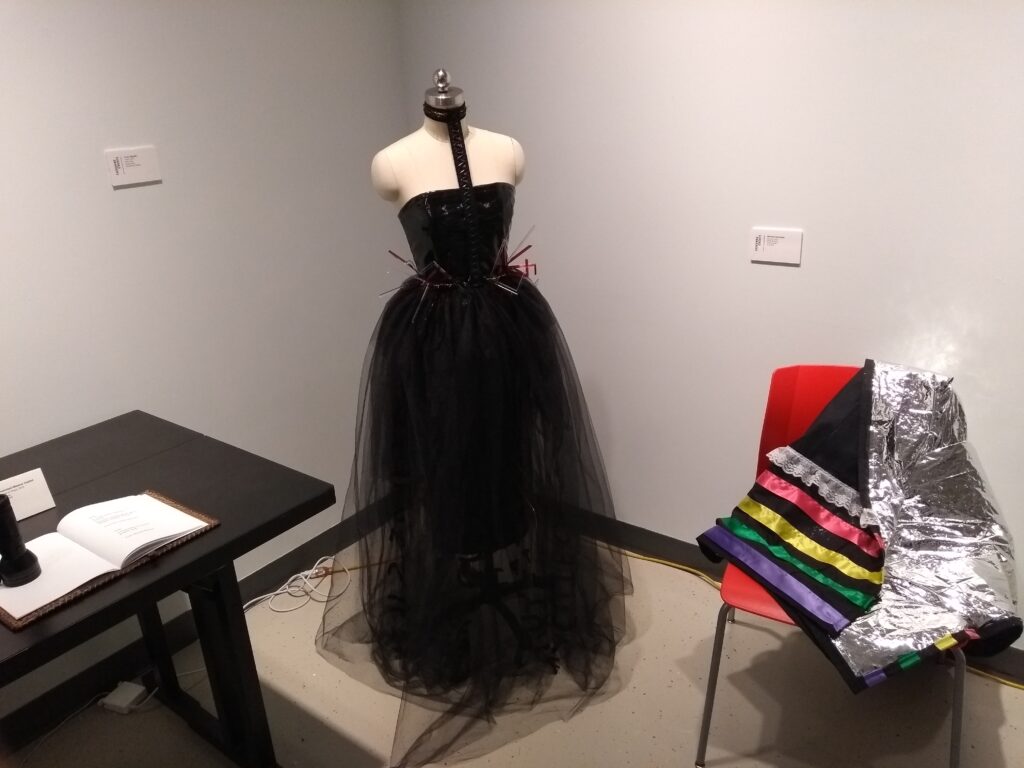
The installation and its individual constitutive projects investigate the complexities of language and censorship, writ large, centered on the premise that words matter in their constitution, in their use, in their absences, and in their evolutions. Development of the first edition of Words Matter began in response to reports from media outlets in December 2017 that the U.S. Centers for Disease Control (CDC) had prohibited seven words from appearing in budgeting proposals. The words were diversity, entitlement, transgender, vulnerable, fetus, science-based, and evidence-based. [1] Later reports, however, suggested that the words were not explicitly banned but rather merely listed as possible red flags for reviewers. [2] These later reports, which attempted to assuage anxieties about censorship under the current administration, are indicative of a wider misunderstanding of the nature of censorship, which Words Matter 2019 investigates. Censorship may take the form of outright prohibition, such as forbidding Indigenous language usage in schools. [3] It may take more subtle forms, such as the argument that concealed weapons on college campuses will have a chilling effect on expression. [4] It may take the form of mediated aphasia as in the failures of auto-correct on digital devices to recognize words like feminism, vagina, or rape. [5] Words Matter addresses these various forms of censorship by investigating: the prescriptive politics of word usage as enacted through censorship, prohibition, enforcement, and insistence (e.g. Knight, J. Nguyen); the multiple and contested meaning of words either across histories or existing in polysemy (e.g. Andic, Asgharpour, Coknar, Delight, T. Nguyen, Peyrano); and mediations between word as abstraction and word as material manifestations addressing the material-semiotic (e.g. Knight, Llamas-Rodriguez).
Through the many component projects and their remediation of evocative, controversial, and mundane words–often considered ephemeral and immaterial–into more concrete, tangible, and sensorial forms, Words Matter 2019 asks viewers to consider the many materialities of language and censorship. The participating artists–including students and faculty–selected specific words on which to center their projects, including the seven CDC words as well as contested language such as “cute,” “labor,” “oriental,” “refugee,” “LGBTQIA,” “security,” “thug,” and “border.” The mixed media installation of projects range in sample material forms, including video of embroidery, clay, 3D fabrication, garment-making, papercraft, software development, and Turkish coffee reading. The projects that cohere together to constitute Words Matter 2019 assert that words are not just important; words matter.
- [1] https://www.washingtonpost.com/national/health-science/cdc-gets-list-of-forbidden-words-fetus-transgender-diversity/2017/12/15/f503837a-e1cf-11e7-89e8-edec16379010_story.html
- [2] https://www.nytimes.com/2017/12/16/health/cdc-trump-banned-words.html
- [3] https://qz.com/1531025/the-racist-history-behind-the-disappearance-of-australias-indigenous-languages/
- [4] https://www.texastribune.org/2018/07/11/ut-austin-professors-argue-campus-carry-chills-free-speech/
- [5] https://www.theguardian.com/technology/2019/sep/06/apple-rewrote-siri-to-deflect-questions-about-feminism
Words & Installations
Dis-orienting Fortune by Atanur Andıç
- Word: Oriental
- Mixed Digital Media
- Dis-orienting Fortune reimagines how the word “Oriental” in its culturally charged meaning can be criticized from an artificial intelligence perspective. In this experience, the sewn illustration on the fabric represents an unfolded interpretation of Turkish coffee cup after being used and dried. The LCD, however, loops a sequence of questions that asks whether if the audience also sees the predictions about the fortune of the person who drank the coffee. The installation aims to present a surreal instance where the eastern belief of destiny is fused with the western sense of progress. In this exhibition, participants witness an endless loop where the codification of the coffee reading ritual becomes a self-doubt of the technical system. As a result, this breaks down the ideological norms that were attached to the historicized dualism of the eastern and western civilizations.
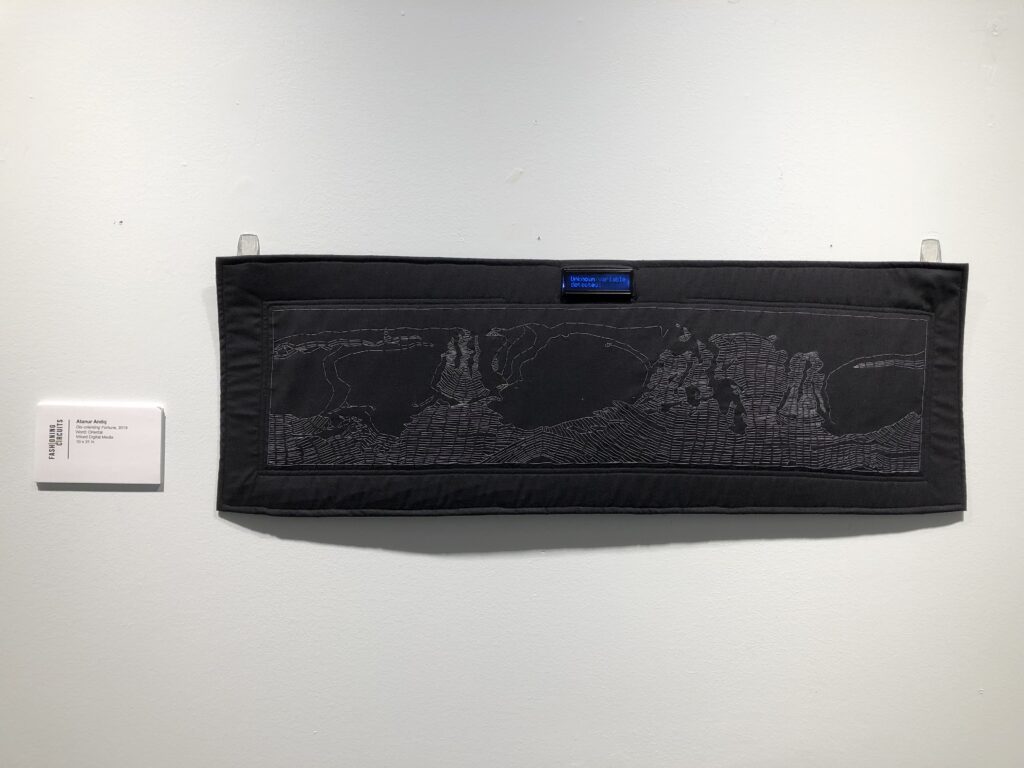
Love Letters by Emma Delight
- Word: LGBTQIA+
- Mixed Media
- A participatory project that draws attention to the uniqueness and importance of LGBTQIA+ sexual identities and orientations. Visitors were invited to compose their own love letter to their queer identity.
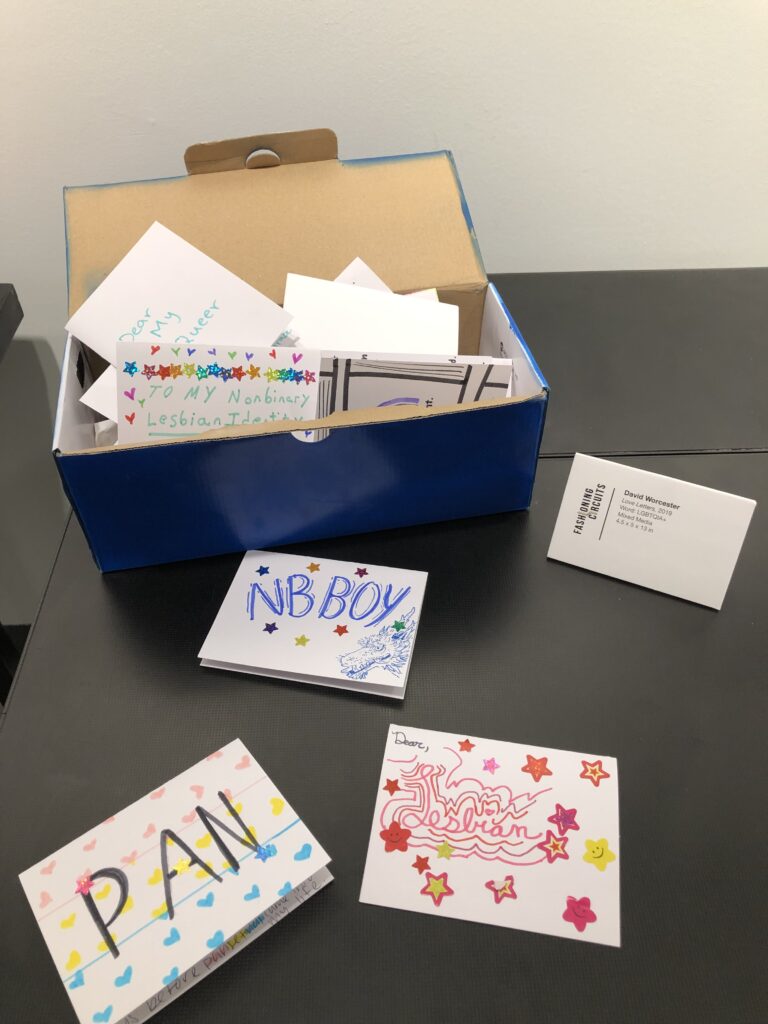
Cute?! by Tước Nguyễn
- Word: Cute
- Textile Media
- I am more than “cute.” I am more than just a number. This word assumes a sense of immaturity, innocence, or lack of knowledge. I am mature. I am not that innocent. And I have obtained a wealth of knowledge. I am not afraid to be vulnerable. I am delicate, fragile, and sensitive. I have thick skin. I am sharp. And I am versatile. I have an aggressive attitude. And I pursue my goals with relentless persistence.
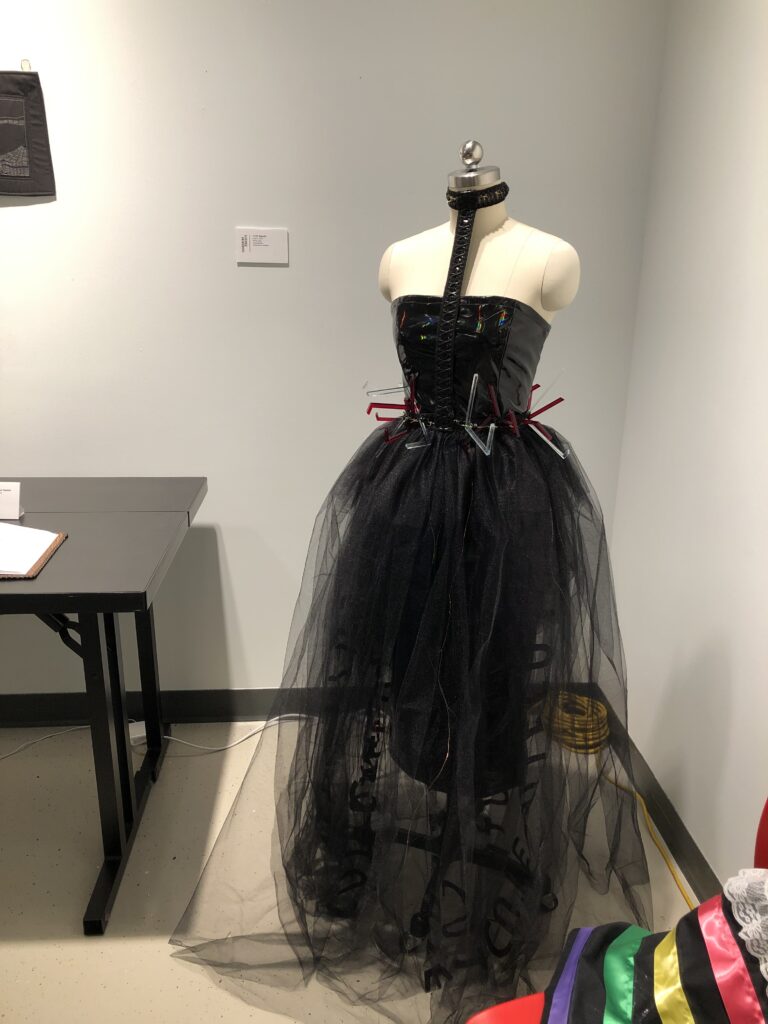
Women in Labor by Maedeh Asgharpour
- Word: Labor
- Acrylic on Canvas
- The project is an apron featuring the illustration of a fetus. The concept is related to pregnant women who must work before or after their labor time because, otherwise, they lose their jobs. This is a handmade apron to foreground the labor expectations on worker women.
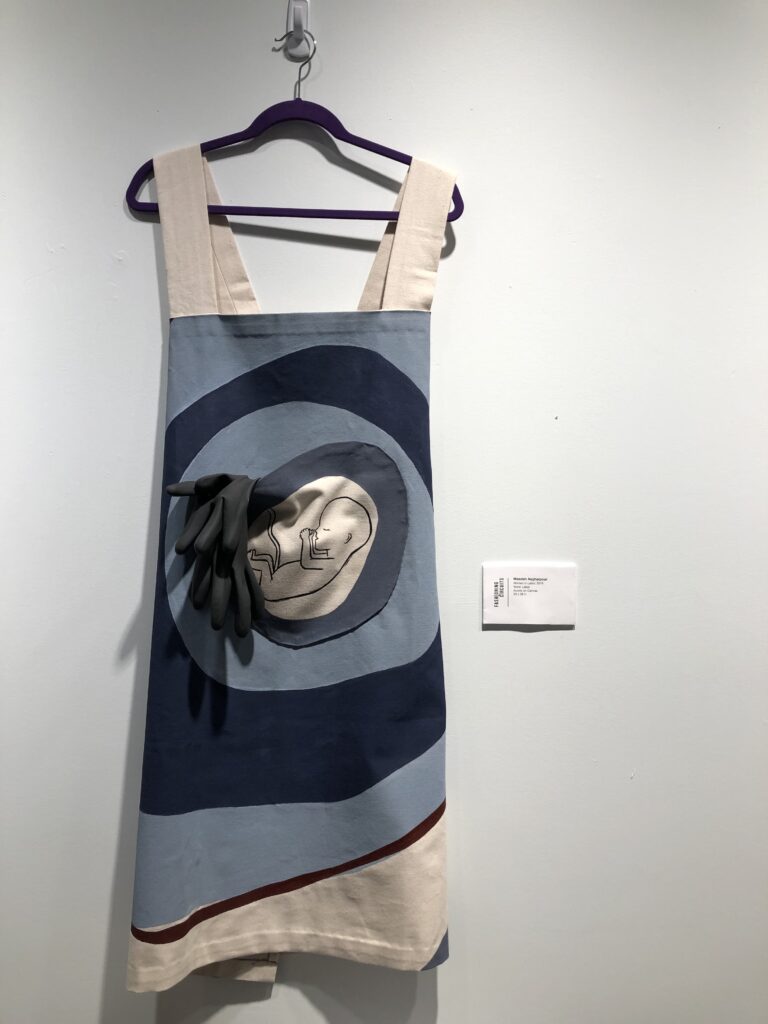
The Book of Thugs by Mohammed Mizanur Rashid
- Word: Thug
- Ink on Paper
- ‘The Book of Thugs’ is an interactive, transmedia art piece. An essentially feminist maker-space, Fashioning Circuits is interested in decolonizing and recovering alternate histories, and ‘The Book of Thugs’ is inspired by this objective. The word thug, in a traditional context, refers to a brutal and violent person, and a more recent turn tries to reclaim the word in a celebratory perspective. This interactive transmedia art-piece, however, invites viewers and spectators to engage with a book that provides an alternate historical origin story and meaning of the word ‘thug’ – one that is more rooted in South-Asian nationalism and anti-colonial resistance rather than how we normatively understand the word to mean today. As the participants navigate through the pages of the book, often uncovering hidden sections, they contend with the multiplicity of meanings surrounding the word ‘thug’ and are compelled to think through the politics of meaning making.

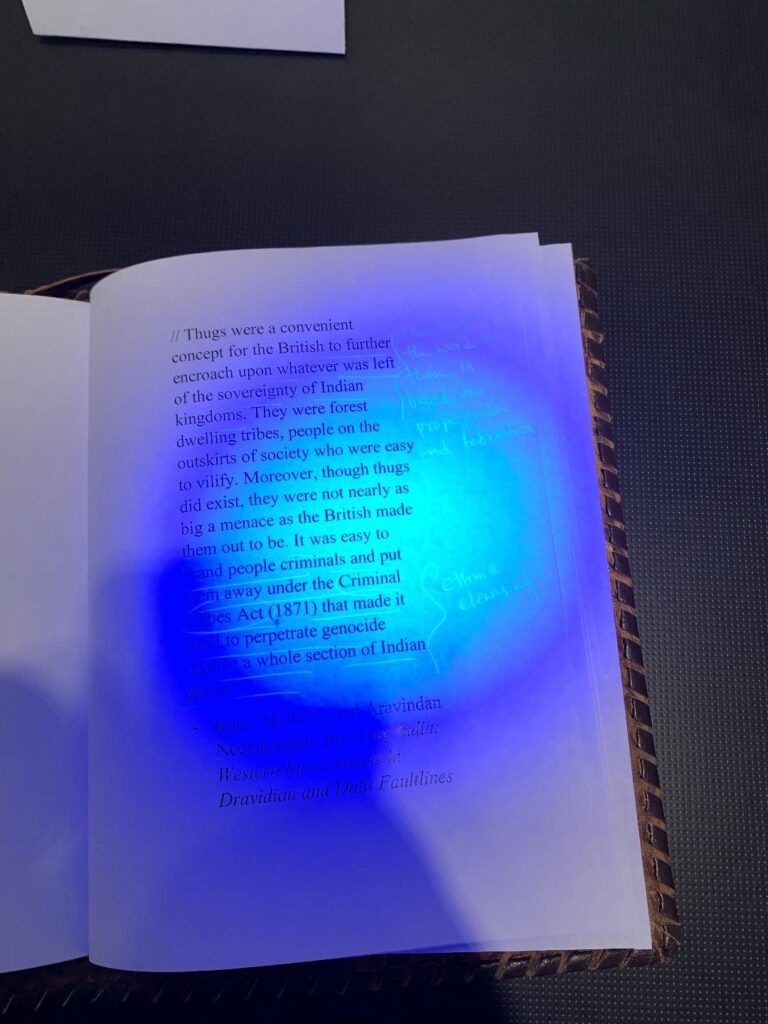
Security by Michelle Del Angel
- Word: Security
- Textile Media
- Security combines the emergency foil blanket with the iconography of the ribbon stripes on a folkloric dress, gesturing toward the displacement and insecurity of those seeking to enter the U.S. at the Southern border.
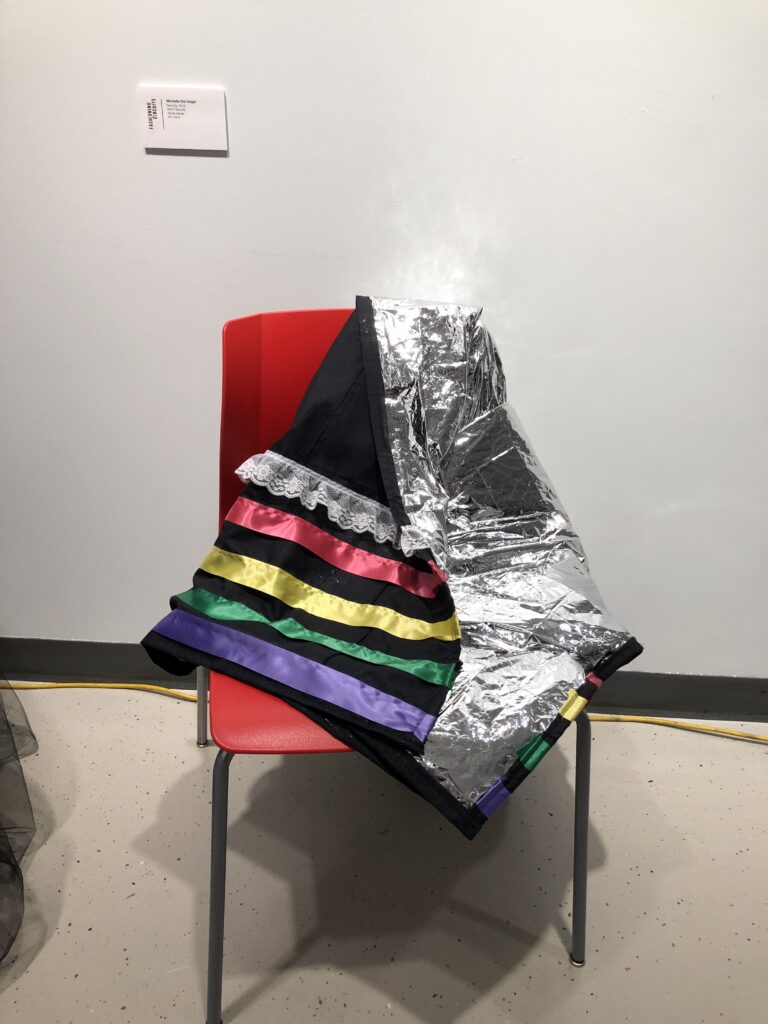
Soft Censorship by Kim Brillante Knight
- Words: science-based, evidence-based, fetus, vulnerable, diversity, transgender, entitlement
- Textile Media
- Soft Censorship is a collection of embroidered hoops that represent mediations of the 7 “banned words” from the 2017 CDC budget. By encountering the embroidered canvas as the site of the censored utterance, the viewer is invited to reflect on the often “soft” nature of censorship. Censorship does not always occur through strict interdiction. Censorship can happen through implicit suggestion, the threat of negative consequence, or even through gaps or absences in the record that attempt to suppress or erase words or ideas. Embroidery is a slow process, making the embroidered utterance a purposeful performance of intentional linguistic and visual defiance. Each hoop is designed to comment on the specific word or phrase in question, as well as the insidious nature of soft censorship.
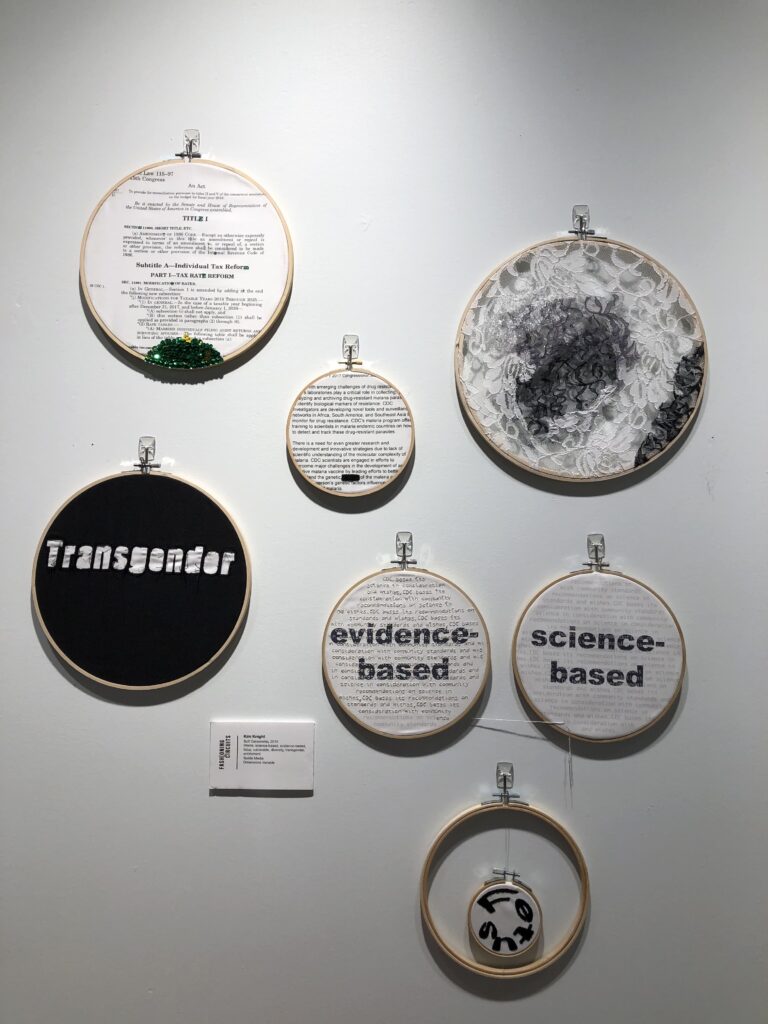
[Redacted December 2017] by Josef Nguyen
- Words: science-based, evidence-based, fetus, vulnerable, diversity, transgender, entitlement
- Paper
- [Redacted December 2017] is a paper-based project that responds to the controversy surrounding seven words that were allegedly banned by the Trump administration from usage in the Centers for Disease Control and Prevention (CDC) budget documents. Although initially reported by the Washington Post in December 2017, the CDC and the Department of Health and Human Services have since denied the accuracy of the story. Regardless of the ultimate veracity of the ban, [Redacted December 2017] interrogates the performative act of banning words, which operates by limiting particular understandings of those words irrespective of how they are actually used or how frequently (or infrequently) they appear. To do so, this project removes the seven banned words from printed copies of recent CDC budget justifications (digitally and through the use of white out). The words are then written back in using invisible ink that is readable with a UV light. [Redacted December 2017]situates the absence and presence of these banned words back in their actual contexts of use by the CDC, revealing how frequently (or infrequently) words are used as well as their different registers of meaning.

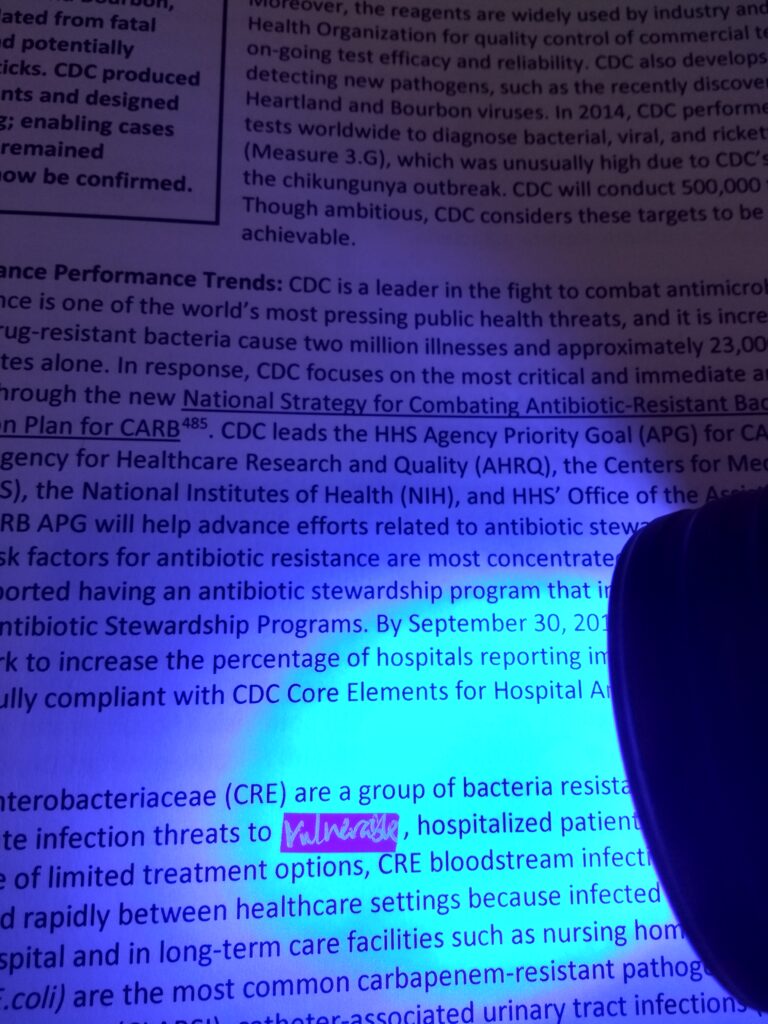
Refugee Tetris by Cenk Köknar
- Word: Refugee
- Digital Media
- Refugee Tetris combines the puzzle mechanics of tetris with the absurdity of Papers, Please to comment upon the 2016 Syrian refugee crisis.
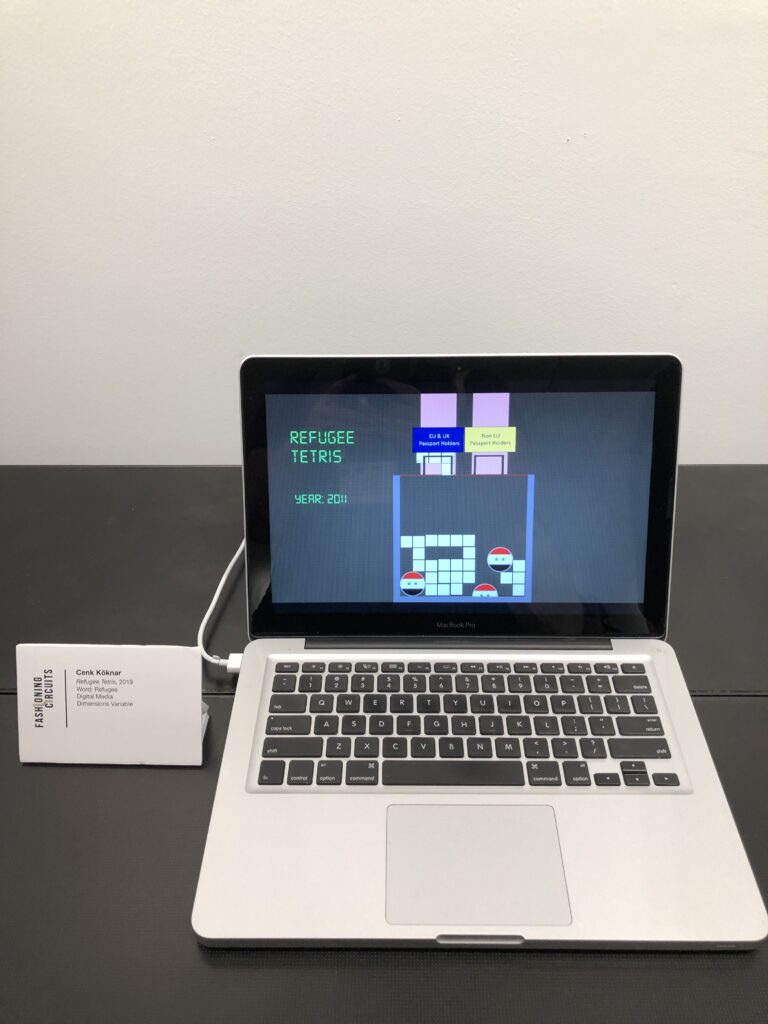
How to Make a B-O-R-D-E-R by Juan Llamas-Rodriguez
- Word: Border
- Clay, Sand, and Paper
- B-O-R-D-E-R takes the simple yet powerful idea that borders are made at the expense of people and turns it into an interactive installation. The installation consists of an acrylic sandbox full of clay people and remains, a set of instructions, a series of claymation videos showcasing these instructions, and a cutting board. Asking participants to cut up clay people mobilizes playful interaction as a way to cast a shadow of culpability on those who encounter and contribute to the creation of a border. B-O-R-D-E-R ultimately asks participants to reflect on how building borders impacts communities around them.

